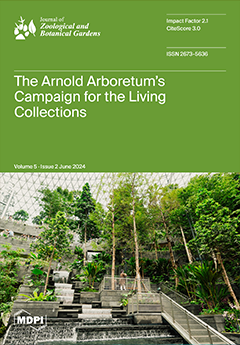Birds kept in zoological institutions are highly exposed to gastrointestinal (GI) parasitism caused by coccidia and nematodes. The current research aimed to characterize the avian GI parasitic fauna in several zoological collections in Portugal and Spain. During the full year of 2022, a total of 120 fecal samples were collected from four zoological institutions: Lisbon Zoo, Olivais Pedagogical Farm, and Avian Biodiversity Center (Lisbon, Portugal), and Avifauna park (Lugo, Spain). Analysis was conducted in domestic bird species (autochthonous and exotic poultry breeds), and 18 different exotic bird species like Galliformes (peacock, pheasant), Anseriformes (duck), Psittaciformes (parrot, macaw, cockatiel, parakeet, cockatoo), Coraciiformes (motmot), Charadriiformes (avocet), Strigiformes (owl), Phoenicopteriformes (flamingo), Struthioniformes (ostrich), Rheiformes (rhea), and Casuariiformes (emu, cassowary). Feces were processed using Mini-FLOTAC (MF), to identify parasitic forms and quantify their shedding (oocysts or eggs per gram of feces). Moreover, 15 fecal samples from pheasants were also processed using the McMaster method (McM), to compare the parasite shedding and frequencies between techniques. MF implementation allowed identification of coccidia infections in all bird collections. Also, peacocks of the Lisbon Zoo tested positive for
Trichostrongylus tenuis and
Strongyloides pavonis, and the exotic birds from Avifauna park were also positive for several nematode species, with
Ascaridia sp.,
Capillaria sp.,
Strongyloides sp., and
Syngamus trachea eggs being detected in pheasants’ feces. Moreover, the analysis of pheasants’ feces with MF detected prevalences of 33% for coccidia oocysts, and 47% for
Capillaria sp. and
Ascaridia sp. eggs, while McM detected prevalences of 13%, 27%, and 40% for the respective parasite taxa, with no differences being observed between methods (
p = 0.39,
p = 0.45, and
p = 0.50, respectively). This research provided more scientific support regarding the importance of using Mini-FLOTAC in routine parasitological diagnosis in birds kept at zoological institutions.
Full article





